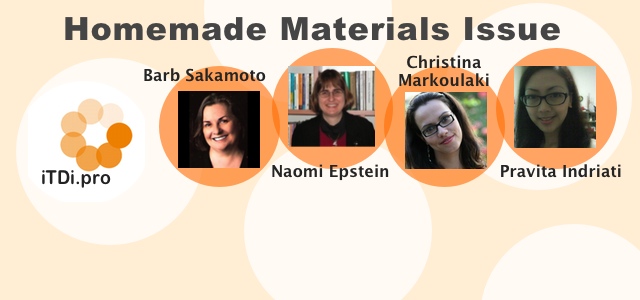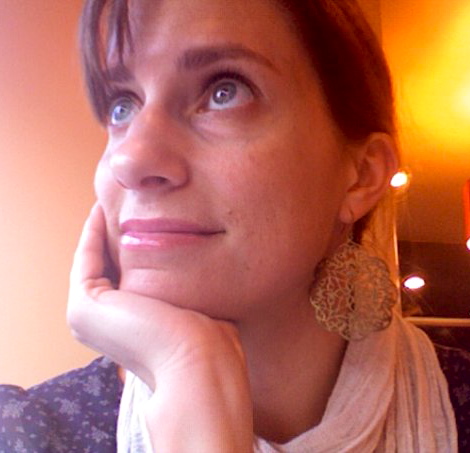13 Things I Heard or Read That Made a Difference / 13 Community Wisdoms – Ann Loseva

Before sitting down to write this post, I checked the post I wrote for this blog a year ago, on what I learnt in 2012. It is full of adjectives describing how I changed over the course of the year. I was entering 2013 aspiring to continue becoming a better me, without actually knowing how I would make that happen. Here’s the story of how it all turned out.
This year has been a very different year for me and brought some new realities to my eyes. What I’m struggling to express is the fact that I’ve become much more aware of the people around me and what they have to tell me. All I’ve learnt about myself and people, about life and making choices, about teaching and learning this year has become possible through the people in my community reaching out to share themselves with me. So I’m passing on these 13 lines of what struck me as wisdom throughout the year. These are sometimes direct quotes torn out of the contexts of online chats and real-time conversations, or words I caught and noted during the sessions I attended at conferences. There are two lines from my students, and one excerpt lifted from a magazine. My humble explanations—as well as a very amateur analysis—follow. The order of points that made a difference to me makes no difference in and of itself, and the numbers are I can say confidently, purely incidental.
1. Great minds think alike and fools seldom differ.
The phrase was intended to be a joke in a chat, or at most a piece of localised wisdom. However, it sank deep into my mind and I decided to share it with my students the next day. At first, the students had some difficulty translating it, and then some of them began to take it really seriously. They were gazing into the distance, or looking down into their notebooks, or staring right through me. I had merely wanted them to appreciate how beautifully the language worked in this particular case of seeming opposition. A bit of wisdom for me: students are trained to dig for something behind the words. Even if they cannot do it, they feel like they must try. So I probably should work harder on helping them notice the shape and beauty of the language right there in front of them.
2. What we hear and what others say is different.
This is taken from my Breaking Rules course notebook and may not be a direct quote, but it is highlighted. Such a simple truth and yet so powerful, like maybe all real wisdoms are. Originally it was used in regards to a lesson reflection process. It was meant to remind me that transcribing a chunk of a lesson can prove revolutionary by allowing me to notice what a lesson actually is, and move beyond the prism of my own inward perceptions. I’ve done this type of transcribing only once, and it really was a revolution in seeing my own teaching and my students’ learning. The wisdom in this phrase speaks for itself. I’d like to set it as a goal for the next year, a reminder to repeat the experience more than once, and ignite the flames of my personal revolution again.
3. Sorry of my gramar.
This grammar test was a revelation to me. This line on the bottom of the page, so sincere in its apology, bravely accepting (and embracing) inaccuracy, reaching out for a teacher’s help, struck me. I just want to be a better teacher for this student, and for others, who don’t leave this note on their grammar tests. A bite of wisdom says that it’s high time I did something more to teach grammar.
4. Don’t let the negative attitude influence you.
It doesn’t matter much which dialogue this phrase was part of, as it, in my opinion, can influence our whole view of life. As a person and especially as a teacher working in staff rooms of all kinds, it’s quintessential to keep this in mind if we want to live a happy life. And I do want to, so I walk out of my house each morning reminding myself that letting the negative effect me is a choice. Now I’m passing it over to you, hopeful that it will make a world of difference for you, too.
5. My lesson is not really only mine, students are also there, so they need to take responsibility as well.
As the year went on and my awareness grew, I realized that the ideas that resonate with my understanding of what’s right rub off on me with a longer lasting impact. They become the ideas that make me tick. Such is the case with this piece of wisdom from one of the sessions I attended at iSTEK Conference. I strongly believe students should feel as if they are the rightful owners of their learning and bear responsibility for actions we take together in class. It’s not an easy process to make them feel this way. But I have seen how a shift to this kind of attitude impacts the kinds of results students can see in their own learning process.
6. Have you made your students bored?
This is one of the two quotes on this list that come from plenaries I’ve been to this year. A lesson during which neither my students nor I get bored is the one ace lesson I aim for every day of my teaching. And thanks to this question and the answers explored in the plenary, I know that the human brain reacts to relevant content and to getting emotionally involved. It’s nice to know that tapping into this responsible-for-pleasure part of the brain not only seems logical and right, but is backed up by science. It felt good to have my vision of an ace lesson proven valid by neuroscientists and Herbert Puchta.
7. We’ve all understood that you have a perfect sense of humour. But we won’t be able to write this quiz in 13 minutes.
Oftentimes what makes a palpable difference is downright bitter. It takes a leap of faith to see through the haze of this bitter feeling and recognize the underlying reasoning behind a seemingly casual comment made by a student. I’ve written a post about this and one more similar remark on my blog (http://annloseva.wordpress.com/2013/10/16/too-much-of-a-good-thing-teacher/). Having written this, I now realize that I should have paid more attention to #2 on this list. Changing my behaviour in class might involve major personality changes on my part. To be honest, I’m not sure just what those changes would be. So, if I’m going to be honest, I should admit that this wisdom is not easily acquired.
8. I don’t remember you. But I remember what you taught us.
Some of you might have stumbled on this idea on other ELT blogs lately (for example, here http://theotherthingsmatter.blogspot.ru/2013/11/a-whisper-of-gratitude-jalt-2013.html, from Kevin Stein, in Part IV and a bit more in the comments). This is what a student said to her teacher having met her again after several years. I have an itch to write a long commentary on this but I’ll choose to hold back for now and make vague observations. Much as I can’t quite agree with the wisdom here, I do know that a teacher’s ego can be a bothersome thing. This quote had me thinking of my place in a class. And it also caused me more than a bit of worry (see #7). The right balance between putting myself out front and disappearing into the background is so difficult to find and I struggle with it in almost each and every lesson.
9. Professional development IS a career.
Most of my real life friends, as well as my family, have nothing to do with education. They work in industries of different kinds. They are working hard, doing overtime to climb those career ladders. Once our conversations touch on the career ladder issue, my story is always the shortest. In my university, no matter how many conferences I attend and present at, I’ll be working as an English language teacher for all my life. While talking about what role the ladder of success seems to play in our careers as a teacher, a very important and wise person from my PLN gave this sharp reply: professional development is a career. This dialogue I will not forget very soon. Because professional development is a career and I am aware of it now.
10. You’re inexperienced but very natural, real.
I’m surely set on commenting on the inexperienced part of this quote. I think it states the truth very bluntly, and that’s what I like about it. Being inexperienced seems a very natural thing to be as a teacher at my age. I’m almost happy to be finding myself ignorant and rushing to try and fix it. The lessons pass and so do terms, and hopefully what I’m learning from my own reflections and the ELT community will help me build a firm base for the years of teaching to come. At the same time, I wish to hold onto my current emotional understanding of my job, the beliefs about it that I have now.
11. There’s a word we have in Japanese for that – omotenashi.
This is a quote from outside teaching, but maybe still about the people in teaching I’ve met this year. Visiting Japan for JALT Conference has changed my life, my routine, my life plans, my outlook in several ways. When in Japan, I was startled at how kind, friendly and helpful people were to me. The dictionary search tells me omotenashi means “hospitality, entertainment, service”. My wonderful Japanese teacher friend used this word to describe the kind of willingness of the Japanese to be of help. This is one of the features of Japanese culture that keeps luring me back, because everybody likes to be treated nicely.
12. One should read more, as everything that can possibly be happening within the human soul has been described a good many times, especially so in Russian literature.
This is not an eye-opener. In fact, its obviousness is exactly the reason why I like this statement from Psychologies mag so much. With my love for reading, it seems inexplicable why I fail to integrate reading into my classes in a way I find satisfactory. I love to notice minute details and fleeting impressions as much as I love a good story, so it looks almost a paradox to me that my teaching line is devoid of a chance for students to pay attention to detail or let a story unfold. More wisdom to keep in mind in the year ahead is connected with getting back to Russian literature. I think I’m now ready to do that.
13. I didn’t like myself, now I like myself a little bit.
That is it. Having a look back at the year 2013, I find that I’ve come to like myself a little bit more. Thanks to the people I’ve met, both online and offline, I’ve found myself in the best of places in this community. The community that has shaped itself into a cosy corner where I can feel comfortable saying what I want to say, where I can be sure I’ll receive comforting pats on the back when I’m having a difficult time. The community that is generously sharing their wisdoms with me so that there is always a chance for me to grow and develop as a teacher and as a person.
I would like to thank Malu Sciamarelli, Barbara Sakamoto, Willy Cardoso, Herbert Puchta, Hiroshi Oki, Penny Ur, Michael Griffin, Steven Herder, Naoko Araki Amano, John Fanselow, my students Gosha and Dima, and a glossy mag Psychologies for providing food for thought and a wisdom to hold on to. I would like to stretch my arms in gratitude to so many, and I hope you feel it.
Connect with Ann and other iTDi Associates, Mentors, and Faculty by joining iTDi Community. Sign Up For A Free iTDi Account to create your profile and get immediate access to our social forums and trial lessons from our English For Teachers and Teacher Development courses.
Like what we do? Become an iTDi Patron.
Your support makes a difference.




















